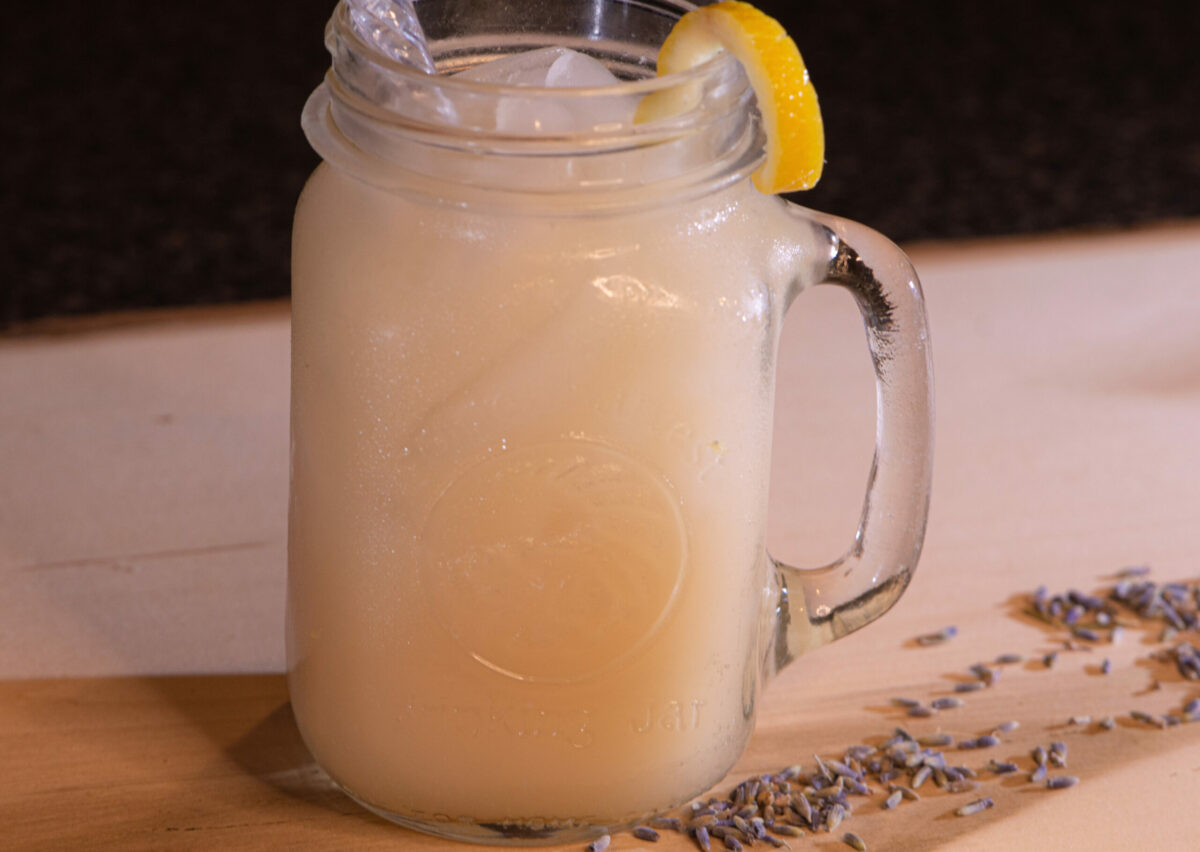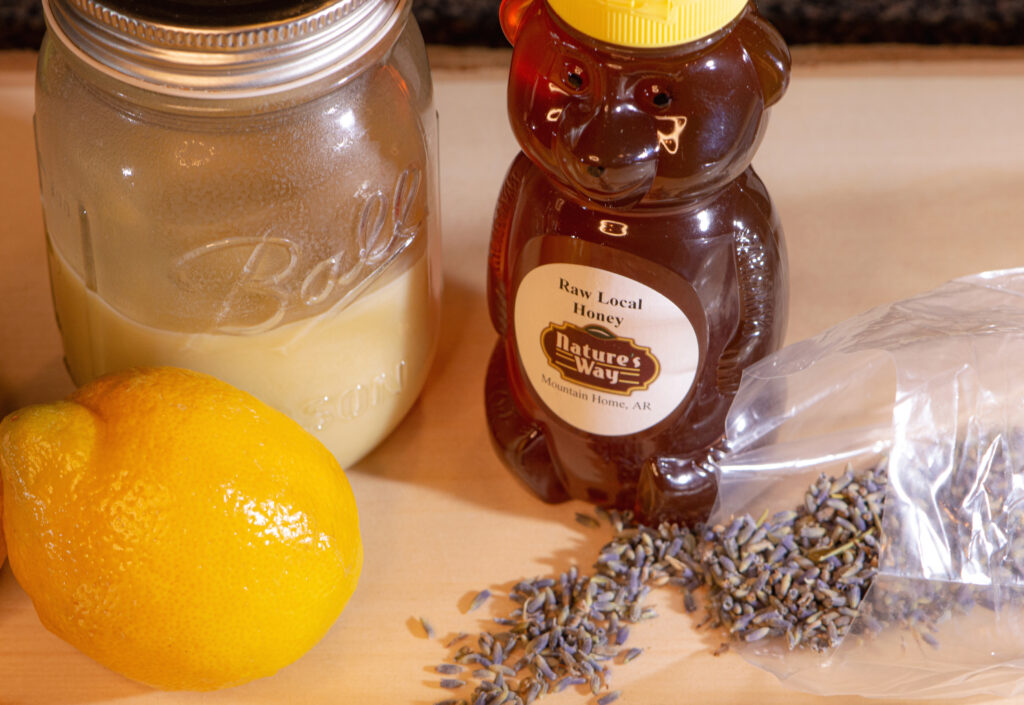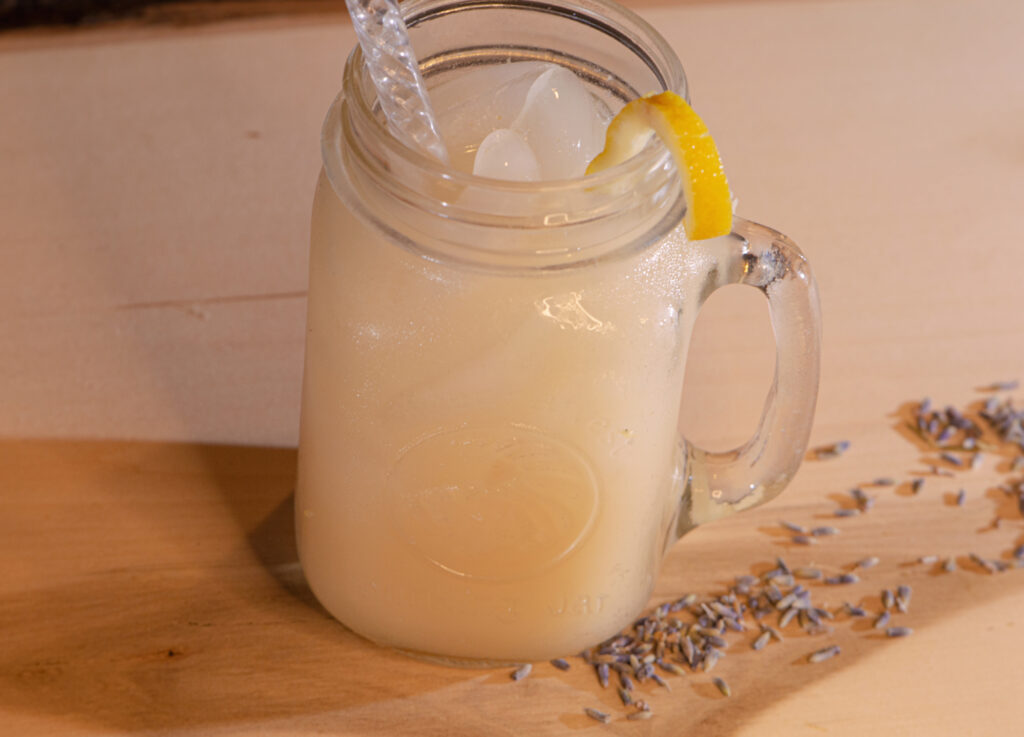
August 18, 2021 by Angela Laufer
With the health benefits of honey, lavender (linalool) and lemon (limonene), this delicious & sugar free infused lavender lemonade is hard to pass up! The combination of invigorating and relaxing, is a perfect getaway on a hot summer day. It’s also made with coconut oil whipped honey, which can be used in an endless amount of recipes, fit for any season.

**Before you start making recipes using cannabis-infused ingredients, it is important to be able to calculate how many servings you will be making, and the amount of THC in each serving. The advised medicinal amount of THC for an edible serving in the state of Arkansas is 10mg, although a good starting point for ingesting cannabis edibles is to limit yourself to less than 5mg THC; even less if you are new to THC-infused food. Use our dosage calculator to help calculate the potency of your individual servings. **
Step 1: Making Your Coconut Oil Honey: In a medium-size mixing bowl, add 1T infused coconut oil and ½ cup of honey. Mix until coconut oil and honey are well-blended. Cover and place your mixture and mixing bowl in the fridge to cool for about an hour. Keep in mind that whipping the mixture at a colder temperature will result in a lighter, fluffier and more whipped honey in the end, whereas a warmer temperature will give you a creamier honey.

Knowing this will come in handy when you think about what you’re going to use your infused coconut oil honey in. For example, you may want more of a whipped consistency in your mixture for desserts, breads, and breakfast items, in which you could infuse with maple, pumpkin, cinnamon, or berries. And perhaps you may want a creamier base for marinades, glazes or sauces in rich meals, in which you could infuse with sriracha, peanut butter, bourbon, or citrus. Like I said, the combinations are endless!
Step 2: Squeeze Your Lemon Juice: While your coconut oil and honey mixture is cooling, cut and squeeze enough lemons to make 2 cups of lemon juice. (For reference, I purchased a bag of smaller lemons, and it took about 10-12 lemons to get 2 cups of fresh-squeezed juice.) If you would like to use lemon slices or twists as a garnish, make sure to save a few slices for the end product.
Step 3: Making Lavender Simple Syrup: To start your lavender syrup, take a small saucepan, add ½ cup of water, ½ cup of honey, and your lavender, and bring to a boil. Once boiling, let simmer for several minutes. I tend to put my herbs in a stainless-steel steeping tea ball (once the honey and the water are dissolved, as to skip the straining process after the syrup is nicely infused)
Strain out your lavender (or pull steeping ball out), pour into a glass container. Cover and chill in the refrigerator for at least a half hour, until it turns into a syrup-consistency.
Note: The reason why I’ve added honey to 2 separate steps in this recipe, is because honey at high heat will lose all its health benefits. (Of course, remember that the benefits are far greater in locally sourced, organic, and GMO-free honey.) Benefits that include being rich in antioxidants, lowering bad cholesterol, triglycerides, and inflammation. It can lower blood pressure and help heart health and can even suppress coughs and sore throats. The honey is a necessary ingredient in creating your infused lavender sugar, therefore using half a cup of honey in the whipped coconut oil will ensure you’re still giving your body the benefits from honey it deserves. (:
Step 4: Whipping Your Coconut Oil & Honey: After your lavender syrup cools for a while, take your coconut oil and honey mixture out of the fridge, and use a hand mixer on its highest speed until it’s whipped to your desired consistency.
Step 5: Bringing It All Together: Pour into a large pitcher, your lavender syrup, whipped and infused coconut oil honey, fresh squeezed lemon juice, and 4 cups of water. Mix well.
Pour over ice and use lavender sprigs, mint leaves, lemon slices or all the above as a garnish, if you so desire. (:

Enjoy!
Note: I made my medicated coconut oil with Banana Hammock, an indica-dominant hybrid. Another option for infused oil -if you want to bypass the decarboxylation process- is by using already-infused grapeseed oil. Currently, you may be able to find grapeseed oil by NSM via online ordering, with same-day pick-up, in both 50 and 1000 mg. Grapeseed oil has a high flashpoint so you can utilize it in many other meals, it’s measured by syringe or eyedropper which creates ease in dosing, and it’s already “activated”/decarboxylated, so no baking or conversion through heat necessary!
Cooking with Cannabis-Infused Ingredients
A good starting point for ingesting cannabis edibles is to limit yourself to <5mg THC ; even less if you are new to THC-infused food. It can have the tendency to be a lot stronger, more intense, and can differ drastically from smoking it. For one, the effects can take anywhere from a half hour to 3 hours to fully metabolize, depending on an individual’s unique body and metabolic rate. In addition, because the THC is digested through your liver, and can more readily cross the body’s blood-brain barrier, the high can be stronger and last longer.
With that said, your infusion’s potency depends on many factors, from how long and hot it was cooked, to the potency of your starting product, as well as taking into consideration if your strain was indica or sativa leaning. To test the potency and effect of your finished product, try a smaller amount (<5mg) and see how that dose affects you after an hour or so. Titrate your dose as desired, and you can then use this personalized “standard” dose as a baseline for your recipes.
**Check out our dosage calculator for help in calculating your edible’s dosage @:
https://www.plant-family.com/thc-dosage-calculator/
Happy Cooking!
Download Printable PDF: Infused Lavender Lemonade Recipe with Medicated Coconut Oil Whipped Honey